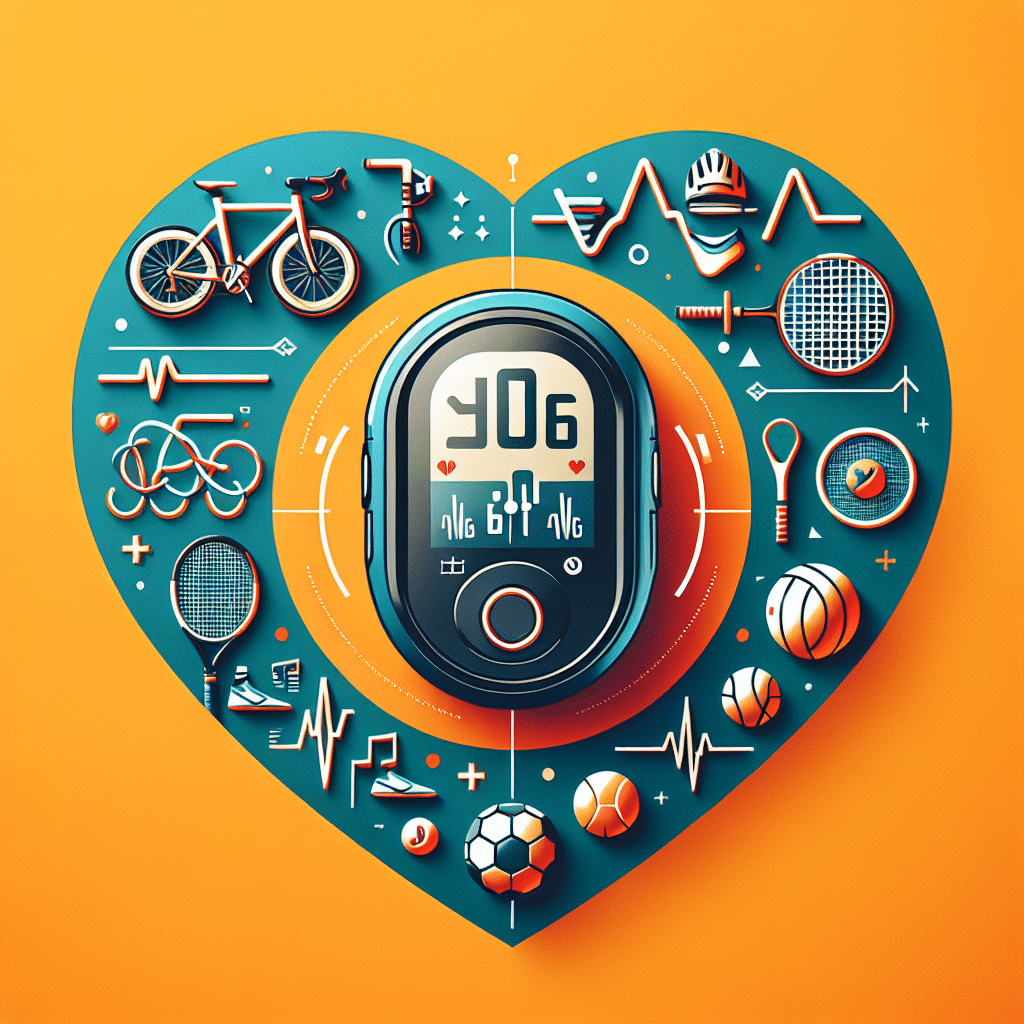Heart Rate Monitors for Cycling and Sports: A Comprehensive Guide
Understanding Heart Rate Monitors
Heart rate monitors (HRMs) are essential tools in the realm of cycling and sports. They measure the number of heartbeats per minute (BPM), offering insights into cardiovascular fitness, exercise intensity, and overall health. These devices have evolved, becoming more sophisticated with advanced features that cater specifically to athletes’ needs, especially cyclists.
Types of Heart Rate Monitors
-
Chest Strap Monitors:
Chest strap monitors are among the most accurate types of HRMs. They consist of a strap that you wear around your chest, connected to a sensor that detects electrical signals generated by your heart. The data is transmitted wirelessly to a watch or mobile device. These are preferred for high-intensity workouts where accuracy is paramount. -
Wrist-based Monitors:
Many modern smartwatches and fitness trackers utilize optical sensors on the wrist to measure heart rate by detecting blood flow through the skin. While they are more convenient and easy to wear, they may be less accurate during high-intensity activities compared to chest straps. -
Arm Bands:
Similar to wrist monitors, arm bands are worn on the upper arm. They often feature optical technology and can provide an accurate heart rate reading. They strike a balance between comfort and performance, ideal for those who find chest straps uncomfortable. -
Smartphone Apps:
Many cycling apps can enable heart rate tracking through external sensors or through built-in smartphone sensors. While convenient, they may not provide the same level of accuracy as dedicated devices.
Key Features to Look For
-
Accuracy:
The primary function of an HRM is to provide accurate heart rate data. Chest straps typically excel here, but advanced wrist monitors have closed the gap significantly. -
Connectivity:
Look for devices that use Bluetooth or ANT+ technology for seamless connection to smartphones, cycling computers, or fitness apps. This enables you to analyze your performance data more effectively. -
Battery Life:
Depending on how frequently you train and how long you ride, battery life can be a crucial factor. Some HRMs offer rechargeable batteries, while others use replaceable ones, providing options that align with your usage. -
Water-resistance:
If you’re cycling in various weather conditions or are an avid cyclist who engages in multiple terrains, choose an HRM with at least an IP67 rating. -
Additional Metrics:
Many advanced HRMs offer more than just heart rate data. Look for features like GPS tracking, cycling speed and distance measurements, sleep tracking, and VO2 max estimates, which provide comprehensive insights into your fitness.
Benefits of Using Heart Rate Monitors in Cycling
-
Training Effect:
Understanding your heart rate allows you to gauge the effects of your workouts. By identifying target heart rate zones (resting, fat burn, aerobic, anaerobic, and maximum), you can optimize training sessions for endurance, strength, or recovery. -
Tapering and Recovery:
Monitoring your heart rate provides insights into how well your body recovers from intense training. A consistently elevated resting heart rate can indicate overtraining, while a return to baseline provides reassurance that your body is recovering. -
Performance Tracking:
By monitoring your heart rate over time, you can track improvements in your cardiovascular fitness. A lower heart rate at a given intensity equates to improved fitness levels. -
Personalized Training Plans:
Heart rate data can guide personalized training programs. Athletes can design their workouts based on their unique heart rate responses and fitness goals. -
Motivation:
Seeing real-time data during workouts can provide motivation to push harder or maintain intensity, reinforcing your commitment to training.
Popular Heart Rate Monitor Brands
-
Polar:
Known for their accuracy, Polar heart rate monitors are popular among serious cyclists. Their Bluetooth compatibility and insightful training features make them a top choice. -
Garmin:
Garmin’s range combines GPS capabilities with heart rate monitoring. Their devices often include additional cycling metrics, beneficial for competitive cyclists. -
Wahoo:
Featuring streamlined designs and focused on connectivity, Wahoo devices provide reliable heart rate monitoring specifically for cyclists and triathletes. -
Suunto:
Renowned for durability and performance, Suunto watches include robust heart rate monitoring, suitable for both cycling and various outdoor sports. -
Apple and Fitbit:
While designed for everyday fitness tracking, both provide heart rate monitoring functionalities essential for cyclists who prefer a smartwatch format.
Using Heart Rate Monitors Effectively
To maximize the effectiveness of your heart rate monitor, consider the following:
- Calibration: Properly calibrate the device according to the manufacturer’s instructions to ensure accuracy.
- Warm-Up: Always take time for a proper warm-up to ensure your HRM reflects changing heart rates accurately as you start exercising.
- Understand Zones: Familiarize yourself with heart rate training zones. Aim for varying intensities during rides to enhance performance.
- Log Your Data: Use connected apps or software to collect and analyze your data over time, helping to refine your cycling strategies further.
- Regularly Check Fit: Ensure your sensor fits snugly (for chest straps) or comfortably at your wrist to maintain accurate readings throughout your workout.
Safety Considerations
Be aware of your body’s signals. If you experience an unusually high heart rate or irregularity, it’s crucial to address these with a healthcare professional. Train smart by pairing heart rate insights with other metrics such as perceived exertion, hydration status, and fatigue levels for optimal performance.
Heart rate monitors have revolutionized how athletes approach training and performance. With a diverse range of options available and a wealth of features tailored for cyclists and sports enthusiasts, integrating an HRM into your routine can lead to improved outcomes and a better understanding of your fitness journey. Choose wisely and make heart rate monitoring an integral part of your cycling and sports experience.
